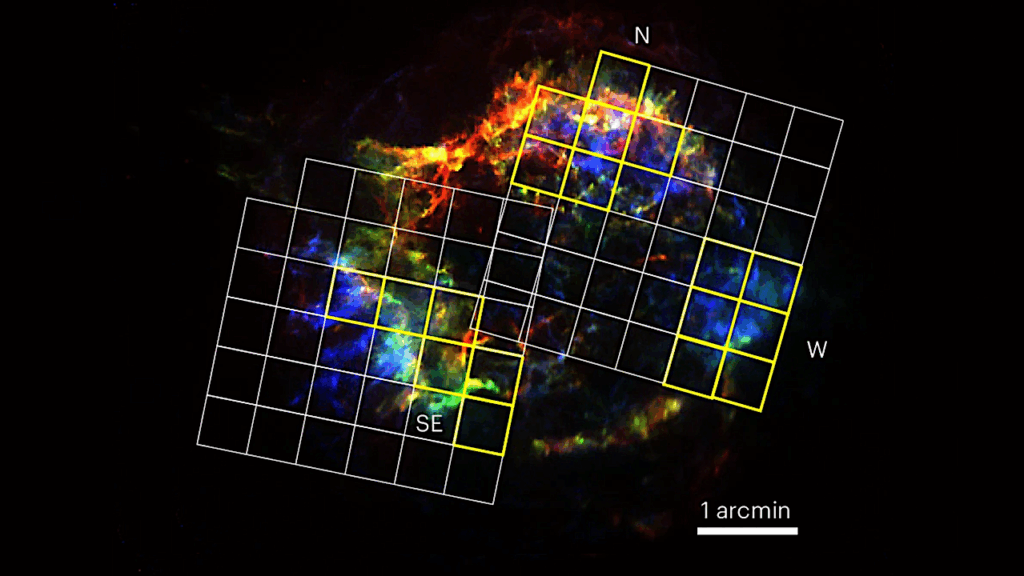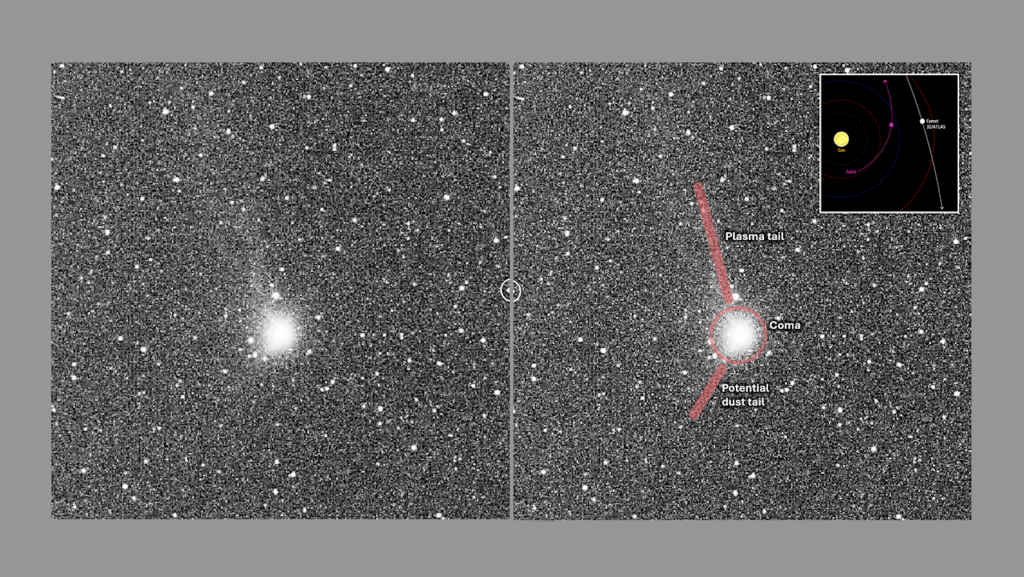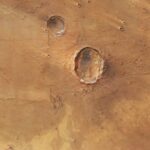Now Reading: Water-driven Accessible Potential Karstic Caves in Hebrus Valles, Mars: Implications for Subsurface Habitability
-
01
Water-driven Accessible Potential Karstic Caves in Hebrus Valles, Mars: Implications for Subsurface Habitability
Water-driven Accessible Potential Karstic Caves in Hebrus Valles, Mars: Implications for Subsurface Habitability
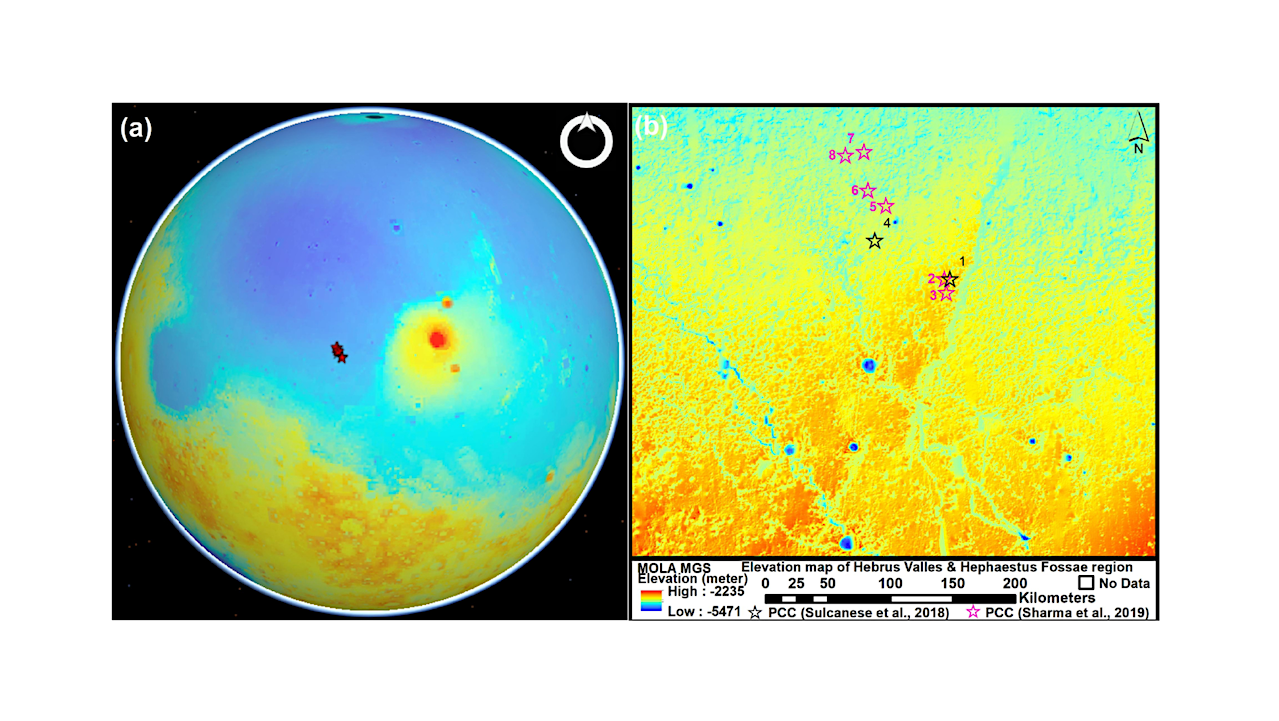

Regional context and geospatial distribution of potential karstic skylight features in Hebrus Valles, Mars. (a) Mars Orbiter Laser Altimeter (MOLA) global topography illustrating the location of Hebrus Valles relative to Tharsis and Elysium volcanic provinces. (b) Regional elevation map of the Hebrus Valles–Hephaestus Fossae region, highlighting skylight cave candidates identified in this study (pink stars) and previously reported features (black stars) by D. Sulcanese et al. (2018). –The Astrophysical Journal Letters
The Hebrus Valles region on Mars exhibits geomorphological indicators of past aqueous activity, such as fluvial channels and aligned sinkholes.
While Martian skylights have mostly been linked to volcanic or tectonic origins, caves formed by water-mediated dissolution remain unexplored. This study investigates eight skylight features in Hebrus Valles as the first potential karstic cave candidates on Mars. We evaluate whether these features are indicative of collapse entrances formed through dissolution of carbonate- and sulfate-rich lithologies.
To this end, the investigation is carried out by integrating mineralogical maps from the Thermal Emission Spectrometer (TES), hydrogen data from the Gamma Ray Spectrometer (GRS), and TES-derived thermal inertia and dust index maps. 3D structural modeling was performed using High Resolution Imaging Science Experiment (HiRISE)–derived Digital Terrain Models. Morphological assessments were conducted using Context Camera and HiRISE images.
The skylights exhibit morphologies consistent with subsurface dissolutional collapse. TES data reveal enrichment in carbonates and sulfates near the skylights, and GRS data show elevated water-equivalent hydrogen.
The skylights lie within indurated, low-dust terrains and are spatially associated with fluvial features. A 3D reconstruction from morphological data of cavity geometry is consistent with its being karstic.
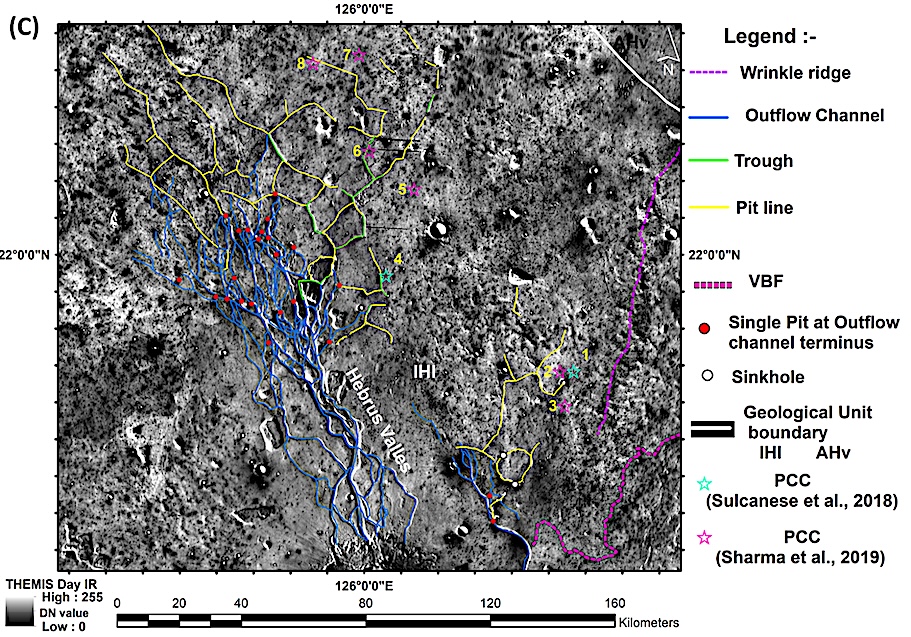
THEMIS IR mosaic overlaid with geomorphic features including outflow channels, troughs, pit lines, wrinkle ridges, and mapped skylights. The spatial correlation of skylights with tectonic and fluvial systems, especially at pit termini and trough intersections, suggests a possible aqueous and structural control on their formation. by D. Sulcanese et al. (2018). –The Astrophysical Journal Letters
Water-driven Accessible Potential Karstic Caves in Hebrus Valles, Mars: Implications for Subsurface Habitability, The Astrophysical Journal Letters (open access)
Astrobiology,
Stay Informed With the Latest & Most Important News
Previous Post
Next Post
-
 012024 in Review: Highlights from NASA in Silicon Valley
012024 in Review: Highlights from NASA in Silicon Valley -
 02Panasonic Leica Summilux DG 15mm f/1.7 ASPH review
02Panasonic Leica Summilux DG 15mm f/1.7 ASPH review -
 03How New NASA, India Earth Satellite NISAR Will See Earth
03How New NASA, India Earth Satellite NISAR Will See Earth -
 04And Thus Begins A New Year For Life On Earth
04And Thus Begins A New Year For Life On Earth -
 05Astronomy Activation Ambassadors: A New Era
05Astronomy Activation Ambassadors: A New Era -
06SpaceX launch surge helps set new global launch record in 2024
-
 07From Polymerization-Enabled Folding and Assembly to Chemical Evolution: Key Processes for Emergence of Functional Polymers in the Origin of Life
07From Polymerization-Enabled Folding and Assembly to Chemical Evolution: Key Processes for Emergence of Functional Polymers in the Origin of Life














